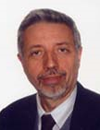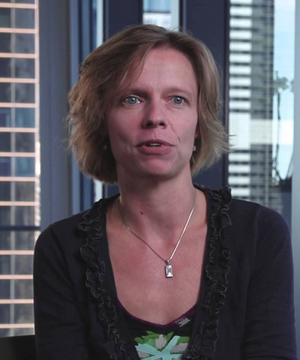Giovanni CamussiProfessor, University of Torino Dr. Camussi has been Director of PhD program in Medical Pathophysiology and Full Professor and Chair of Nephrology at the University of Torino, Italy. Dr. Camussi is Adjunct Professor of Medicine at Brown University, Ri. He has been the Head of a Stem Cell Laboratory at the Molecular Biotechnology Center (MBC) and of the Laboratory of Vascular Biology and Angiogenesis at the Research Center for Experimental Medicine (CeRMS). He has been appointed as Research Associate Professor in Microbiology and Pathology at the State University of New York at Buffalo (USA) and subsequently as Full Professor of Nephrology at the University of Naples, at the University of Pavia and Director of the Department of Internal Medicine and President of the Course of Medical Biotechnology at the University of Torino. He lists over 500 publications on PubMED (https://www.ncbi.nlm.nih.gov/pubmed/?term=camussi+g) indexed journals dealing on mediators of inflammation, renal and lung immunopathology, neoangiogenesis, transplantation and stem cell biology and extracellular vesicles. |
Niek DekkerPrincipal Scientist, Discovery Sciences, AstraZeneca Trained as a biochemist with a PhD in enzymology and postdoctoral experience on molecular biology and structural biology. Expertise on structure-function relationships for enzymes embedded in the biological membrane. Working in drug discovery at AstraZeneca since 2000 in various managerial and project roles. Currently associate director biochemical assay development delivering assays for drug screening, and leading the activities around extracellular vesicles for drug delivery at AstraZeneca. Co-authored more than 70 peer-reviewed publications. |
Samir EL-AndaloussiAssociate Professor, Karolinska Institutet Samir EL Andaloussi received his PhD in 2008 in Neurochemistry with Molecular Neurobiology at Stockholm University. After a postdoctoral stint at Karolinska Institutet, he moved to University of Oxford to work with extracellular vesicles (EVs). Since 2013 Associate Professor Samir is a Principal Investigator for a growing lab at Karolinska Institutet, now with nearly 20 employees. His lab primarily focuses on developing non-viral drug delivery systems for nucleic acids and proteins with particular focus on production of engineered exosomes for delivery of biotherapeutics. In addition, Samir in one of the Founders of Evox Therapeutics, a company developing engineered EVs for treatment of genetic diseases. |
Andrew HillProfessor, La Trobe University; ISEV President Professor Andrew Hill gained his BSc(Hons) in Biochemistry and Molecular Biology from Victoria University of Wellington in New Zealand and his PhD at Imperial College, London. He held post-doctoral positions in the MRC Prion Unit (London) and in the Department of Pathology at the University of Melbourne as a Wellcome Trust Prize Travelling Research Fellow. Andrew joined the Department of Biochemistry and Molecular Biology at the University of Melbourne in 2002 and joined the Bio21 Institute when it opened in 2005. In 2015, he moved his laboratory to the La Trobe Institute of Molecular Sciences (LIMS) at La Trobe University where he is also Head of the Department of Biochemistry and Genetics. Andrews research team investigates the mechanisms involved in the spread of misfolded proteins associated with neurodegenerative disorders such as Alzheimer’s, Parkinson’s and prion diseases. His laboratory studies the role that extracellular vesicles such as exosomes play a role in this process. Over the last five years his laboratory has developed an interest in extracellular vesicle RNA and investigated its potential as disease biomarkers for neurological and other conditions. He has been the recipient of several awards and prizes including a Victorian Young Tall Poppy Award in 2006, and the Edman Award (2005) and Merck Research Excellence Medal (2010) from the Australian Society for Biochemistry and Molecular Biology. He has held a number of competitive fellowships including an ARC Future Fellowship (FT3) and NHMRC Senior Research Fellowship. In 2016, Andrew was elected President of the International Society of Extracellular Vesicles (ISEV). |
Sai Kiang LimResearch Director, Institute of Medical Biology, A*STAR Dr Sai-Kiang Lim graduated with B.Sc (Hons), NUS. PhD SUNY at Buffalo and did post-doctoral training Columbia University. She led independent research groups at NUMI, NUS (1996-2001), Genome Institute of Singapore (2002-2007) and then Institute of Medical Biology (2007-present). The current research interest in her lab is the study of extracellular vesicles (EVs) for the development of therapeutics and diagnostics as well as artificial lipid membrane vesicles. |
Esther Nolte-‘t HoenAssistant Professor, Department of Biochemistry & Cell Biology, Faculty of Veterinary Medicine, Utrecht University Dr. Esther Nolte-‘t Hoen did her PhD (2003) on regulation of T cell responses in the lab of Professor Wauben at Utrecht University, The Netherlands. At this early stage, she discovered that T cells can modulate the function of antigen presenting cells by transferring proteins via small extracellular vesicles. As a post-doctoral fellow in Prof. Daniel Davis’ laboratory at Imperial College London, Nolte-‘t Hoen further explored the cell biology of immune cell interactions using state-of-the-art microscopical techniques. After a second post-doc at Utrecht University, she was appointed Assistant Professor in 2013. Her research focuses on the role of extracellular vesicles in communication between immune cells at steady state and during microbial infection. Within this topic, she puts strong focus on technical aspects of extracellular vesicle purification, methods for high-throughput individual vesicle analysis, the RNA content of extracellular vesicles, and the interplay between vesicles and viruses. Nolte-‘t Hoen was awarded a European Research Council Starting Grant (1500 k€) in 2013 to explore parallel mechanisms underlying the formation of viruses and extracellular vesicles. Nolte-‘t Hoen is an active member of the International Society of Extracellular Vesicles and in 2015 organized an international research seminar for this society on how the function of extracellular vesicle-associated RNA can be unraveled. |
Paul RobbinsProfessor, Department of Biochemistry, Molecular Biology, and Biophysics, and the Institute on the Biology of Aging and Metabolism, University of Minnesota Medical School Paul D. Robbins, Ph.D. is Professor Department of Biochemistry, Molecular Biology, and Biophysics, and the Institute on the Biology of Aging and Metabolism, University of Minnesota Medical School, Minneapolis, MN. Previously he was a Professor of Microbiology and Molecular Genetics, Director of Basic Research for the Molecular Medicine Institute and Co-Director of the Paul Wellstone Cooperative Muscular Research Center at the University of Pittsburgh School of Medicine as well as Interim Director of Molecular & Cellular Oncology at the University of Pittsburgh Cancer Institute. He received his B.A. from Haverford College, his Ph.D. from the University of California at Berkeley and worked as a post-doctoral fellow in the laboratory of Dr. Richard Mulligan at the Whitehead Institute for Biomedical Research at MIT. He has co-authored over 320 peer-reviewed manuscripts and 170 book chapters and reviews and edited four books. He was a member of the NIH PathB Study Section, Chair of the Italian Telethon Scientific Review Committee and a member of the Telethon Scientific Advisory Board. He also was a member of the Scientific Review Board of National Gene Vector Laboratory and the Board of Directors of the American Society of Gene Therapy and currently is a member of the National Institute on Aging Interventions Testing Program. He has co-founded two biotechnology companies and currently serves on the Scientific Advisory Boards of four biotechnology companies. Dr. Robbins’ research is focused on developing therapeutic approaches, including small molecules, biologics and stem cells, to extend healthspan and reduce frailty using mouse models of aging. |




